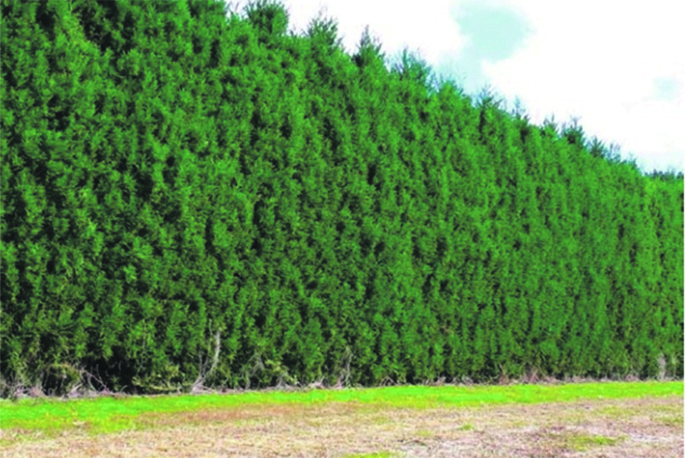Back in the 1940s, 50s and 60s, orchardists in No 3 Rd Te Puke were growing Chinese gooseberries. Some called them ‘Chinas’. Bruno, Abbott and later Hayward made up the varieties. The plant’s training system was basically a fence with the top wire at six foot and another halfway up the post. The laterals were cut back or ‘hedge-hogged’. So, working with these spiky vines was hazardous, especially when picking fruit, as the laterals were facing you. All those orchardists have been lacerated in the eye with a sharp, sometimes hairy, vine. The shelterbelts on those early orchards were lombardy poplars, cypress-lawson and benthamii, phebalium, sometimes pine and later cryptomeria. In the 70s, a poplar rust blew in from Aussie and pretty well wiped out the lombardy poplar from all the fruit growing areas except the cooler areas where they still grow okay. New poplars have now been developed. Fast growing willow The industry then quickly caught on to a fast-growing tree willow called salix matsudane. This discovery, coupled with rapid orchard developments, led to mass shelterbelt planting. The government Plant Material Centre in Palmerston North used S.matsudanaas the female parent and crossed it with male willows from around the world. In the early 80s they released two batches of clones. These ground and water-robbing vigorous trees became the bugbear of many poor orchardists who renamed them with colourful international language. During the late 70s nurseries had started producing casuarinas, cas cunninghamii and cas.glauca. They were fast-growing at 1.5m a year, evergreen and had a semi-open structure giving an ideal wind porosity, making them useful to let cool air travel through, thus avoiding such heavy frost damage to crops. The cas.glauca tolerated wet ground and was recommended for the ‘flats’ of Te Puke and Edgecumbe, but its form was twisty and gnarly. The cas.cuninghamii proved to be mildly vulnerable to phytophthera when over watered. So our nursery concentrates on a hybrid form of casuarinas with the best attributes of both which we named Supercasys. These grow faster – up to 2m/year – with a strong upright form and are phytophthera resistant. Casuarinas are also the only shelter belts, natural or artificial, that do not harbour the kiwifruit vine disease Psa-V.



0 Comments
Leave a Comment